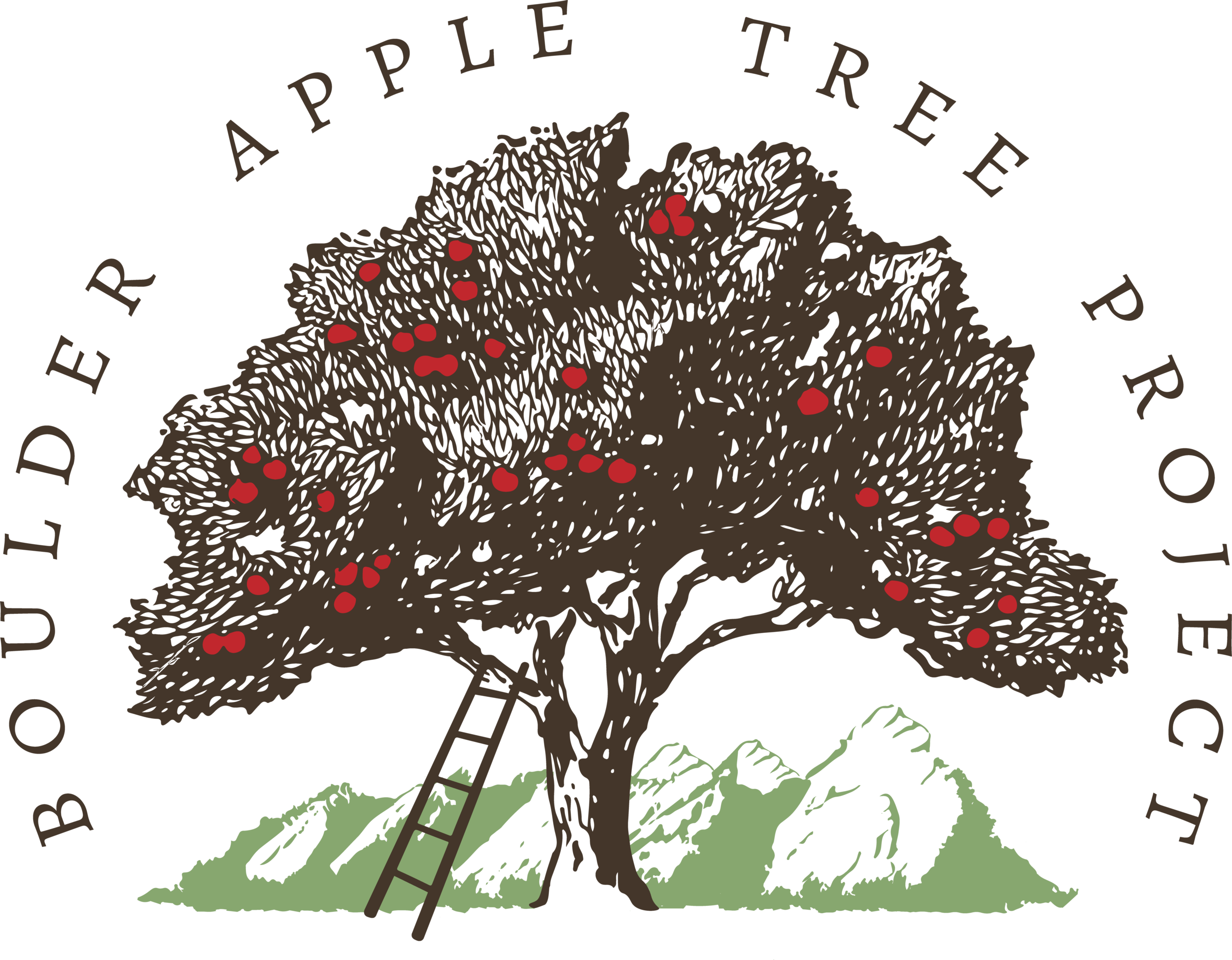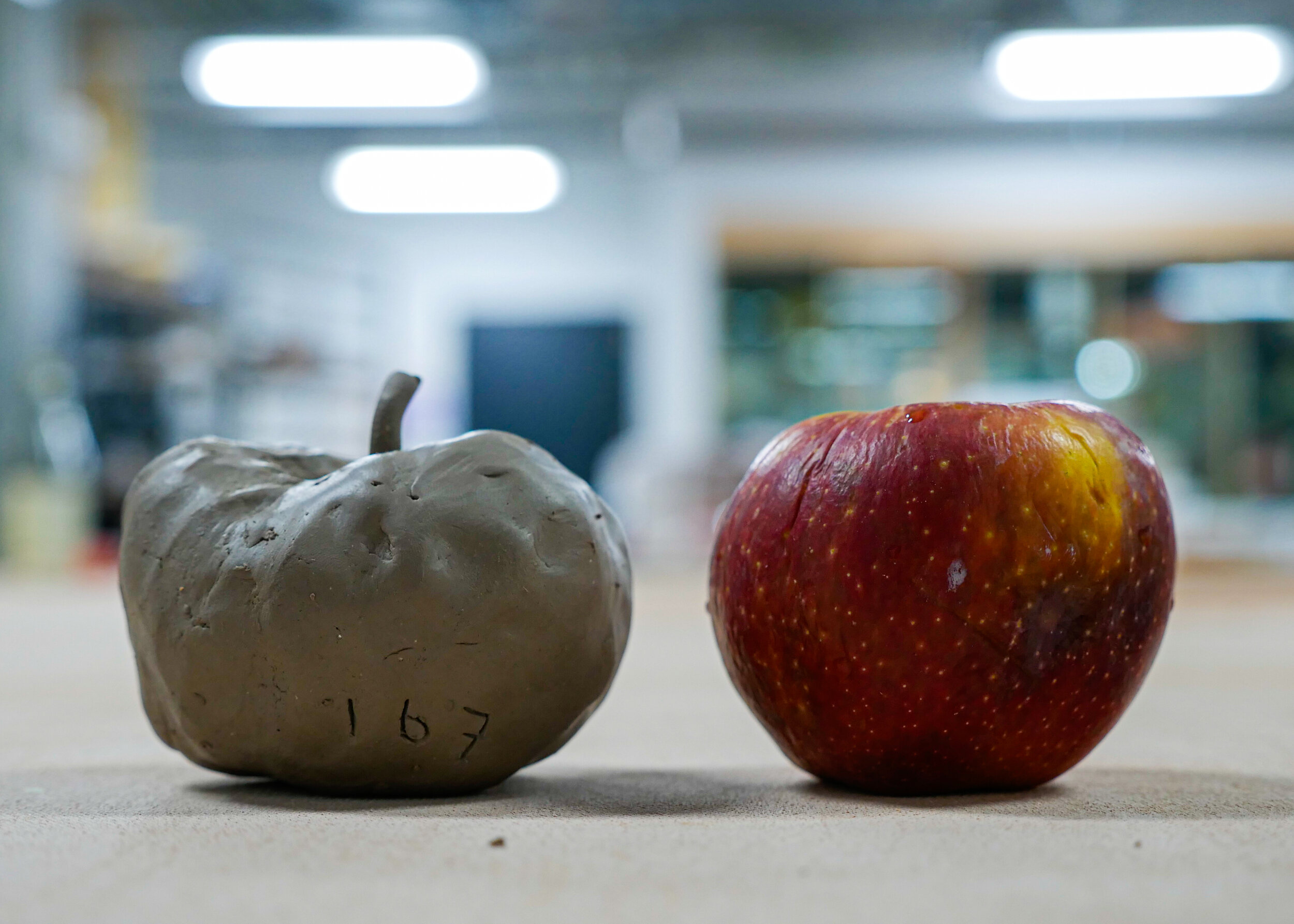Mold my Malus* Merriment
Clay piece (left) replica of the original apple (right)
On a cold night , I went to a clay making workshop organized by Jasmine Baetz from the Art department. The goal was to enjoy some quality with fellow graduate students of color by making clay artifacts and munching on some delicious Onigiris. An hour into the event while I was struggling to bring my clay into a conceivable form, Jasmine asked me about the potential of collaborating through a fellowship. The thought of delving into my creative side and working with an artist was unexpected in my graduate career. But I said yes and went on writing a NEST grant with her and after two weeks we got our grant!
The goal of the NEST project was to bring my expertise in Education and Biology and Jasmine’s expertise in Ceramics together to make an interactive community event. In my field, science is a discovery-based process that allows individuals to explore the world around them, make observations, and take away new and useful information. In comparison, art often serves to enhance appreciation and understanding of how the world works, using approaches such as loose experimentation, tactile engagement, and relational aesthetics. So it’s intuitive to consider the function of Jasmine’s work in service of discovery, understanding, and appreciation of the systems typically explored by mine. The existence of interdisciplinary art/science programs would help learners from all walks of life and with different learning styles, engage in the wonders and rigor that science reveals while also providing philosophical and creative frameworks from art. From a pedagogical perspective, the integration of science and art could help catalyze scientific interest and innovation by enhancing associative and divergent thinking in science students to complement systematic reasoning processes.1
Jasmine and I implemented two interdisciplinary workshops integrating art and science to benefit the community. In our workshops, we used thematic instruction to bring together art and biology to increase students’ and community members’ knowledge and appreciation of apples. Thematic instruction was characterized by using an overarching theme (Boulder Apple Tree Project) to create relationships between the two disciplines. In our work, content from the secondary discipline (Art: ceramics) was used to support the primary discipline (Biology); the activity allowed community members to see and touch apples. Our instruction processes created a rich and a meaningful learning setting and promote positive attitudes towards plants too.² Direct experience with plant products, an emphasis on the relationship between plants and people and the opportunity to explore plant use through art and biology all at once allowed participants to discover the region’s cultural connection through our activities.
After our last event this week, Jasmine and I were glad our collaborative project ended successfully. Getting the opportunity to meet all the great folks living around Boulder and beyond and coming to participate in our workshop was beyond delightful. Hopefully, if time and money permits, we plan on expanding this activity with the students in our CURE labs.
Irfanul Alam
PhD student | Dr. Lisa Corwin
CU Boulder
References
1 Jacobson, S., Seavey, J., & Mueller, R. (2016). Integrated science and art education for creative climate change communication. Ecology and Society, 21(3).
2 Çìl, E. (2016). Instructional integration of disciplines for promoting children’s positive attitudes towards plants. Journal of Biological Education, 50(4), 366-383.

